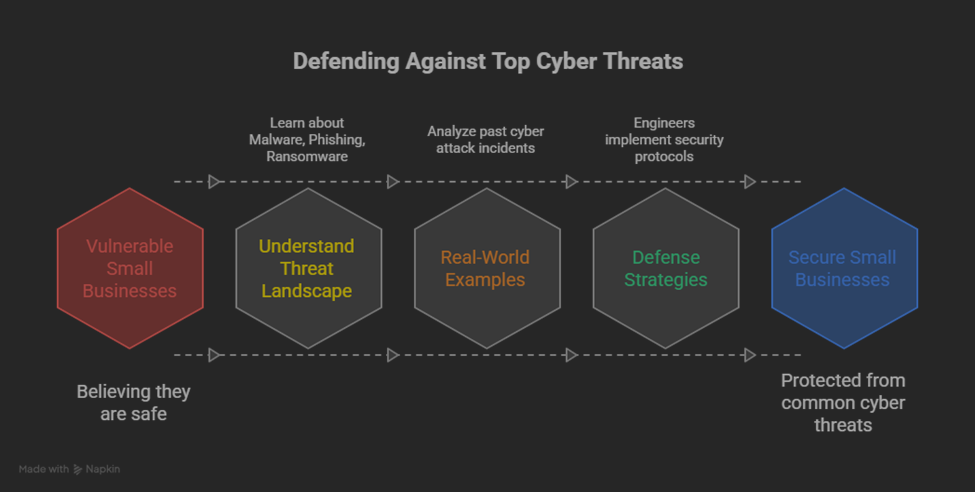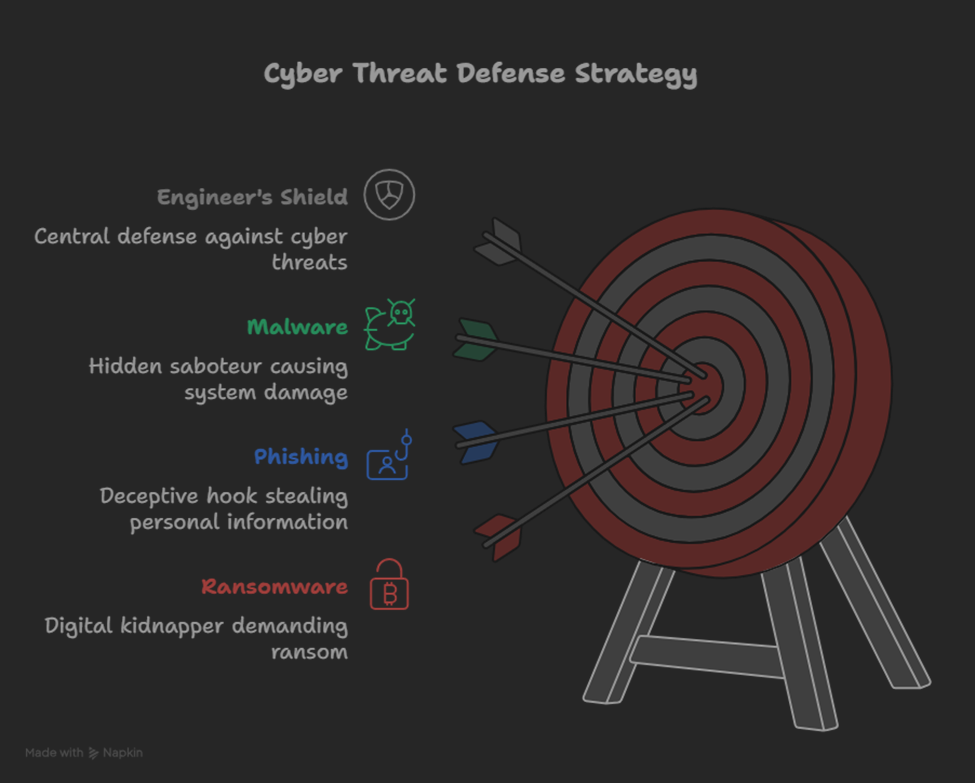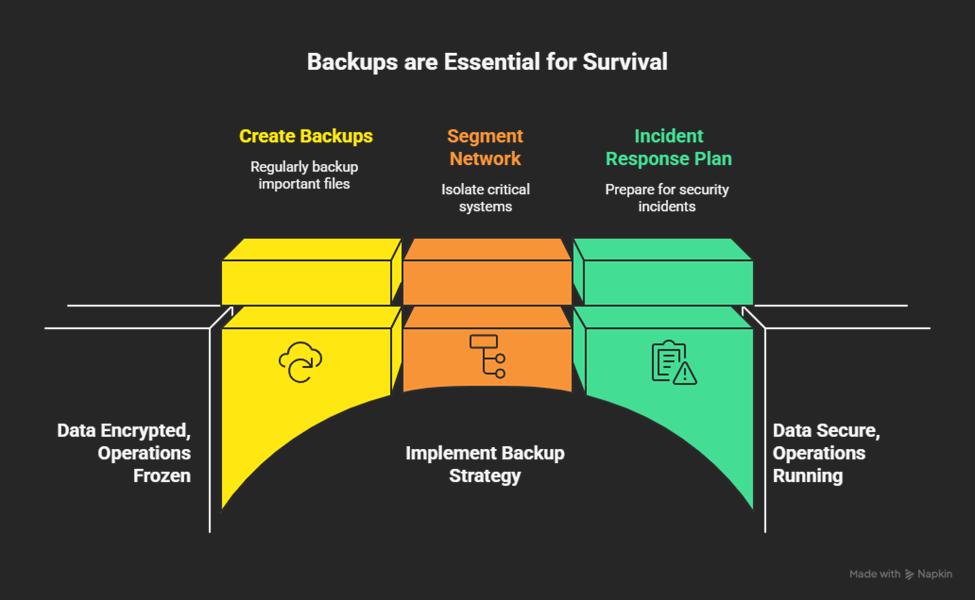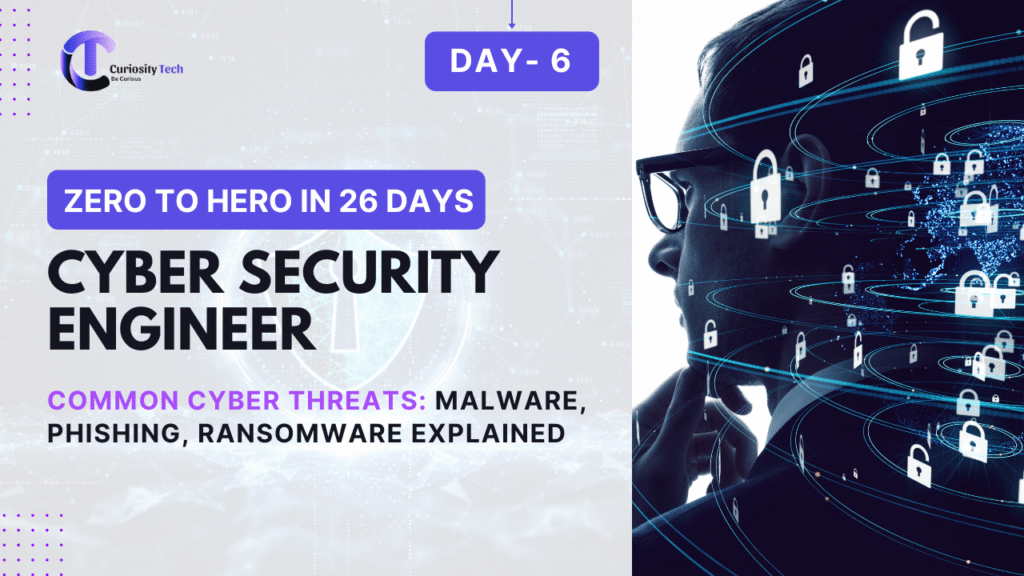During my consulting years at CuriosityTech.in in Nagpur, I often encountered companies who believed: “We are too small to be hacked.” Yet, every time reality proved otherwise. Attackers don’t discriminate; they automate. And among the thousands of threat types, three dominate the danger landscape: Malware, Phishing, and Ransomware.
This blog is structured as a Problem–Solution Casebook: for each threat, we’ll discuss what it is, a real-world example, how it works, its damages, and—the most important part—what engineers can do to defend against it.

Case 1: Malware – The Hidden Saboteur
Problem: What is Malware?
Malware is malicious software designed to disrupt, damage, or gain unauthorized access to systems. It comes in many forms—viruses, worms, Trojans, spyware, and adware.
Real-World Incident: The Stuxnet Worm (2010)
Stuxnet, one of the most sophisticated malware ever created, targeted Iranian nuclear control systems by exploiting Windows OS vulnerabilities and hiding within industrial control software. It managed to destroyed physical equipment (centrifuges).
How Malware Works (Simplified Flow):
- User downloads malicious file via email or USB.
- OS executes it due to weak permissions.
- Malware establishes persistence via registry edits or scheduled tasks.
- Data exfiltrated or system sabotaged.
Impact:
- Financial losses (cleanup, downtime).
- Data theft.
- Backdoors for future attacks.
Solution / Engineer’s Response:
- Enforce least privilege: users cannot install software.
- Endpoint security tools (anti-malware, EDR platforms like CrowdStrike).
- Regular patching of OS and applications.
- Network monitoring (IDS/IPS like Snort) to identify unusual behavior.
Case 2: Phishing – The Deceptive Hook
Problem: What is Phishing?
Phishing attacks trick users into revealing sensitive data—most often through fake emails, messages, or websites mimicking legitimate services.
Real-World Incident: Google & Facebook Scam (2013–2015)
A Lithuanian hacker forged invoices pretending to be a major hardware supplier. Both Google and Facebook fell victim—losing over $100 million collectively before authorities caught the attacker.
How Phishing Works (Attack Chain):
- Attacker crafts lookalike domain—e.g., paypal-secure.com.
- Fake emails lure users into clicking.
- Users enter credentials into fake site.
- Data stolen → attackers use credentials for fraud.
Impact:
- Credential theft (usernames, passwords).
- Identity theft or financial fraud.
- Corporate espionage (phishing often leads to larger breaches).
Solution / Engineer’s Response:
- Deploy secure email gateways with spam filtering.
- Train employees (phishing simulation exercises).
- Enforce 2FA—credentials alone shouldn’t be enough.
- Deploy DMARC, DKIM, SPF to protect email domains.
At CuriosityTech workshops, we routinely train users with simulated phishing campaigns. One of my proudest moments was seeing employees who fell for fake messages initially later report them correctly—proving awareness training works.
Case 3: Ransomware – The Digital Kidnapper
Problem: What is Ransomware?
Ransomware encrypts victim files and demands ransom for decryption keys. Attackers often lock entire companies until payments are made in cryptocurrency.
Real-World Incident: WannaCry (2017)
WannaCry exploited a vulnerability in Microsoft SMB protocol. It spread worldwide, crippling hundreds of hospitals, banks, and government systems. Losses exceeded $4 billion globally.
How Ransomware Works (Step-by-Step):
- Malware delivered via phishing email or drive-by download.
- Executes on infected system and spreads laterally in networks.
- Encrypts user files with unbreakable encryption.
- Displays ransom demand (usually Bitcoin).
Impact:
- Critical files inaccessible.
- Disruption of essential services (e.g., hospitals).
- Financial & reputational damage.
Solution / Engineer’s Response:
- Maintain regular encrypted backups offline.
- Patch vulnerabilities quickly (WannaCry was preventable with an earlier update).
- Use application whitelisting to prevent unauthorized execution.
- Implement robust incident response playbooks: contain, eradicate, restore.
Case from CuriosityTech: In 2023, a Nagpur-based educational institute suffered from ransomware that encrypted student records. They avoided paying the ransom because their IT team had disciplined backup routines guided by our earlier training. This showed the unparalleled importance of a backup-first policy.
Quick Comparative Matrix: Threats at a Glance
| Threat | Attack Vector | Goal | Real-World Damage | Primary Defense |
| Malware | Files, drives, unpatched OS | Steal, disrupt, spy | Stuxnet destroyed physical assets | Patching + EDR |
| Phishing | Email, fake sites, social media | Steal credentials, trick users | $100M stolen from Google/Facebook | Email filters + 2FA + Training |
| Ransomware | Exploiting OS flaws, phishing | Encrypt files, demand ransom | WannaCry caused global outages | Backups + Patch Management |
Infographic Description

Visualize a “Cyber Threat Triangle” infographic:
- Top Corner: Malware – symbolized by a hidden Trojan horse.
- Bottom Left Corner: Phishing – symbolized by a fishing hook attached to an email.
- Bottom Right Corner: Ransomware – symbolized by a lock with a Bitcoin sign.
Each corner describes the attack vector and defense methods, with arrows pointing toward the “Engineer’s Shield” in the center showing Prevention + Monitoring + Training.
Personal Lesson in the Field
In 2018, a local SME contacted me in panic—their files had been encrypted, a ransom note was on every machine, and their business operations were frozen. They had no backups, no segmentation, and no incident response plan. Watching them spend weeks recovering—and losing loyal customers in the process—was one of the hardest experiences of my career. Since then, I’ve developed an iron rule I advise my students at CuriosityTech Nagpur: “Backups are not optional—they are survival.”

Conclusion
Malware, phishing, and ransomware are the three-headed hydra of 21st-century cyber crime. They evolve daily, driven by smarter automation, AI tools, and organized crime. Yet with forward-thinking engineering—combining proactive patching, smarter detection tools, employee training, backups, and multilayer defenses—we can cut off these heads before they strike.
At CuriosityTech.in (Address: 1st Floor, Plot No 81, Wardha Rd, Gajanan Nagar, Nagpur | Contact: +91-9860555369 | Email: contact@curiositytech.in | Social Media: Instagram @curiositytechpark, LinkedIn/Facebook @Curiosity Tech), we believe the antidote to fear is knowledge + practice. In our labs, learners don’t just study definitions—they simulate real ransomware infections and learn how to recover. That’s how cyber engineers gain resilience.

